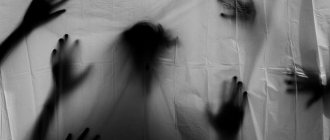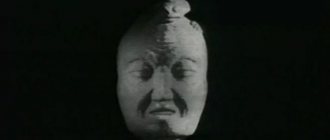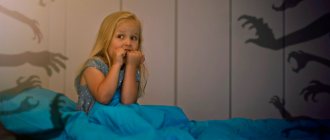May 31, 2021
During the day, a person is bombarded with an avalanche of various sounds: quiet and loud, the singing of birds and the knocking of the neighbors' bumper, the hum of the subway and the sound of the wind. The noise of pipes, the hum of a computer, the sound of cars, the sounds of neighbors, a TV, a refrigerator, a washing machine, the noise of a crowd. A person often gets used to background sounds and does not notice them.
Sounds play an important role in human life. They can save someone's life. By knocking, screaming, and squealing, people reported mortal danger. They could do this with a whistle, a weapon, a car horn, or just shout. But it is difficult to imagine that someone who hears such a signal sound can fall into a state of wild fear and panic.
Fear and panic attack from hearing a loud sound is acoustic phobia.
Causes of fear
Events influence the human psyche. Participants in military operations came under fire. In peaceful life, they remain afraid of sharp sounds. The child hears his parents screaming during quarrels. He grows up, but the fear of sharp or loud sounds remains. This fear arises for the following reasons:
- Tragedies of the past. Fear of loud sounds occurs among witnesses or participants in car accidents, train accidents, or terrorist attacks.
- Natural disasters. Natural phenomena such as thunderstorms and tornadoes cause panic. People are hiding in their homes. Hearing thunder is unbearable for them.
- Horror films. They are for people with strong nerves. Don't get carried away by horror if you flinch at unexpected sounds and hide under the covers when monsters and monsters appear on the screen.
The child is frightened by electrical appliances. They make noise, buzz, whistle, rumble. A child may have a tantrum when turning on a vacuum cleaner or hair dryer.
Manifestation of acoustic phobia:
Residents of megacities have an extremely difficult time; man-made sounds haunt them at every step.
People suffering from acoustic phobia are afraid of : a creaking door, a bursting balloon, a switched-on household appliance, the sound of firecrackers causing panic, toys making loud sounds, songs performed in a ringing voice, music, the sound of air and ground transport, thunderstorms, croaking birds.
They have poor control over their behavior, feel weakness in the limbs, and possibly increased heart rate. They prefer not to attend mass celebrations and avoid fireworks and fireworks. Even at home, they behave somewhat carefully: the sound adjustment of household appliances is carried out exclusively from the lowest positions.
- the patient is afraid of children and dogs, as they can make unexpected loud noises,
- do not attend parties, movies, holidays,
- don't go out
- is wary of speakers, microphones, horns,
- When you turn on the TV, a person immediately reduces the sound level to zero, then gradually increases it
- anxiety when talking on the phone,
- the traffic noise is unpleasant,
- irritation from neighbors' conversations,
- use of earplugs,
- long sound causes tension,
- a feeling of discomfort in a conversation in a raised voice and quarrels.
- avoiding situations that can cause panic attacks.
- Aggression in response to loud sounds is possible.
As soon as the annoying noise subsides, the person’s emotional state returns to normal. Convulsions may occur.
Symptoms
People who are afraid of sharp sounds experience the following symptoms:
- cardiopalmus;
- increased sweating;
- dry mouth;
- pale skin;
- increased blood pressure;
- dilated pupils;
- trembling of hands and feet;
- numbness of fingers;
- dizziness;
- muscle tension;
- loss of self-control.
In severe cases of the disease, panic attack syndrome may develop. It will lead to a serious mental disorder - neurosis. Treatment is long-term, over several years.
Increased blood pressure accompanies a fear attack
What are the causes of claustrophobia?
The causes of claustrophobia lie in genetic memory and psychological trauma experienced in childhood or in adulthood. Adherents of evolutionary theory explain the fear of closed spaces by the genetic memory of our ancestors, who were afraid to be in caves with a narrow entrance or cramped manholes, where they escaped from wild animals. The possibility of a collapse, closing the entrance or a tight passage caused fear of suffocation, practically being buried alive. This fear was so strong that it became entrenched at the genetic level and, under certain circumstances, is activated in modern humans. Proponents of the theory of psychological trauma believe that difficulty breathing, restriction of freedom of movement and exit, associated with a threat to life and experienced by a person at least once, can lead to claustrophobia. Some scientists believe that even the suffering of the fetus when passing through the birth canal can later cause a fear of closed spaces, labyrinths and tunnels.
Approximately 5 to 10% of the population suffers from some form of claustrophobia, with the vast majority developing it during childhood. Most often occurs in a child who has had such sad experiences in the past as: • Being in a dark room from which he cannot find a way out or turn on the light. Therefore, there is no way to justify parents who use locking their child in a closed, especially dark and cramped room as punishment. Such rash actions can subsequently become the cause of the development of many psychopathologies and, first of all, claustrophobia. • Inability to find a way out of the mirror maze when attending entertainment events. • Accidentally found himself locked in a closet and drawer. • Falling into a deep pool if you cannot swim. Therefore, you should not teach a child to swim by throwing him into the deep and expecting him to swim on his own, following his instinct. Even if you insure it, the horror of drowning can leave an indelible impression for the rest of your life and lead to claustrophobia. • If the child gets stuck in the bars of a bed or fence, especially if his head is stuck. • When parents lose a child in a large crowd. • If the baby is left alone in a car or van.
I have listed the most typical situations, but parents should always be vigilant and come to the aid of their child if he suddenly finds himself in an uncomfortable, and even more dangerous, situation. For example, when the light in a closed room is suddenly turned off at night, you must immediately come to the rescue. Feeling your presence, especially with a flashlight, the baby will certainly calm down and will not have time to experience all the horror of being alone in a closed room, from which he cannot find a way out. The most common sites for claustophobia attacks are those in which there is a fear of restraint or suffocation. These may include: • Isolated areas, locked or cramped rooms. • CT and MRI machines. • Cars, buses, trains, airplanes and other means of transportation (elevators) of a closed type or without the possibility of free exit. • Basements, tunnels, caves. • Chair for hairdresser, dentist. Moreover, the dentist’s panic arises not so much from fear of pain, but from fear of limitation. • A large crowd or queue at the store, at the ticket office, as well as crowds of people in the narrow corridors of clinics, social institutions, etc.
In general, it can be argued that claustrophobia is an evolutionarily prepared (programmed), biologically significant (relating to safety and survival), as well as a non-cognitive (unconscious) phobia. It is easily provoked, stable and uncontrollable by consciousness.
In addition, the cause of claustrophobia can be not only one’s own psychological trauma and past experience, but also the sight of people in an extreme situation. For example, a person squeezed into a car during an accident or victims of an elevator fall. Even an overly colorful story about the feelings of a person who has experienced being in a confined space (searching for a way out of a cave labyrinth, waiting for many hours to be released from a stuck elevator, etc.) can become an impetus for the development of claustrophobia.
An etiological factor in the development of a phobia can also be organic damage to the so-called amygdala, a small but significant structure of the brain responsible for the formation of fear and a person’s fight-or-flight response to a threat. The reaction to fear is accompanied by an increased release of adrenaline, which determines the entire symptom complex of autonomic failure. A decrease in the right lobe of the amygdala was noted in patients with panic disorders and any phobias, including claustrophobia. Most often, attacks of fear of closed spaces first appear at the age of 25-35 and the frequency of their occurrence decreases after 50. In children, claustrophobia is less common and more easily treated. Women are more susceptible to it than men, perhaps due to their emotional lability and impressionability.
What are phonophobes afraid of?
People have specific objects and events that frighten them. These include:
- Balloons. A person is afraid to be near inflated balloons. At the mere thought that the balloon might burst and make a loud sound, the phonophobe's palms sweat and knees tremble. Inflating the balloon yourself is out of the question.
- Musical toys. Children cry if the sound of a toy frightens them. It may be a cheerful tune, but it is too loud for a baby. A child may have fear for the rest of his life.
- Loud voice. Phonophobe does not like airports and train stations. He is afraid to imagine that he will hear the loud voice of the dispatcher. A person does not go to public places where it is always noisy.
- Bird sounds. People can't stand it when flocks of crows circle overhead. This chorus of ominous croaks is associated with aggression. The next step is an attack. These birds are considered residents of the cemetery. Meeting them makes you think about death.
- Pyrotechnics. On New Year's Eve or Victory Day, the phonophobe will stay at home. He has already soundproofed the apartment so as not to hear frightening sounds.
It is impossible to predict what will trigger a panic attack.
Sitting at home or hiding from sounds every time is not an option. This way you will miss a lot of interesting things in life.
Phonophobe fears balloons that burst with a loud sound
What is claustrophobia?
Claustrophobia is a psychopathological syndrome, the main manifestation of which is the fear of closed and/or cramped spaces. Among all phobias, it occupies a leading position. The name itself consists of the Latin “claustrum”, which means closed room, and the Greek “phobia”, which translates as fear.
Clinically, claustrophobia is accompanied by anxiety and fear when the patient enters a closed room, especially a cramped one, without windows or from which exit is difficult. Some people with this disorder cannot sit in an elevator, train compartment, car or airplane. In addition, panic can occur not only indoors, but also in any circumstances that restrict movement, for example, in a crowd, crowded transport, large crowds of people at the entrance or exit, queues, etc. Moreover, the forms of manifestation of a phobia can be of very different strength - from slight discomfort to panic attacks.
Many people don't even realize that they suffer from claustrophobia. For example, people usually explain the desire to always keep the door of their room open, the inability to sleep peacefully in a completely closed bedroom by the fact that it is difficult for them to breathe in a closed room. But in fact, a person lacks air precisely because of the unconscious fear of a closed space and the breathing disorder it causes. If the process does not progress, then this condition does not affect the quality of life in any way, but with increasing symptoms and the addition of new places and reasons for the occurrence of attacks of claustrophobia (elevator, car, etc.) it leads to significant restrictions on a person’s freedom of movement and communication. Sometimes the suffering becomes so severe that a person cannot enter a utility room or closet without locking the door in the open position, and he gets to work on foot, avoiding any transport. He cannot enter the subway, attend public events, etc. In this state, a person prefers to stay at home and do remote work. Constantly making sure to avoid closed, cramped or isolated rooms and places has a devastating effect on the psyche and can lead to severe depression. A person is almost always in tension and reacts in panic to any spatial restrictions. At the same time, he perfectly understands that the threat to his life and health is practically minimal, but he cannot cope with the fear that arises.
Treatment of fear
The psychotherapist will make a diagnosis and prescribe treatment:
- Tranquilizers: phenazepam, midazolam, buspirone. Help relieve anxiety and fear.
- Psychotropic drugs: deloxetine, venlafaxine, milnacipran. Prescribed for depression.
- Sedatives: novo-passit, nozepam, barboval. They have a sedative effect.
You can treat fear using unconventional methods:
- Neurolinguistic programming. Modeling verbal and nonverbal behavior produces results. Opponents of neurolinguistic programming talk about the danger of restructuring the psyche.
- Hypnosis. Patients are wary of this method. In a state of trance, they can tell something that an outsider does not need to know. Those who decide to undergo hypnosis will feel improvement after the first sessions.
- Sound therapy is the use of contrasting melodies. First, the patient listens to a calm melody, then a loud one. And such a change of compositions occurs several times during the session.
A person who experiences fear is constantly tense. He expects to hear a loud sound at any moment and will not be able to control his emotions. A doctor can help you cope with this condition.
Ways to deal with fear of loud noises
It is advisable to combat a phobia of loud sounds under the guidance of a psychologist, because this problem is very serious. The most common methods of struggle are art therapy and hypnosis. Good results are obtained from group training sessions on listening to various audio materials.
Psychotherapy for dealing with fear of loud noises
A diagnosis of phobia of loud sounds can only be made by a specialist – a professional psychologist. Based on the results of the examination, he develops a course of individual lessons for the client. The course includes conversations, group and individual training, as well as music and sound therapy, based on listening to various characteristic noises and melodies.
Psychotherapy is an effective way to solve problems
Treatment of phonophobia with hypnosis
A person's fear of sounds can be treated with hypnosis. However, this method is contraindicated for many patients. Hypnosis can only be used by a licensed professional and only with the consent of the patient. During the session, the patient is instilled with a positive attitude towards loud sound stimuli. The optimal number of sessions is ten or more.
Treatment of phonophobia by a specialist usually gives good results.
Classification
Logophobia is a phobic disorder. It can be expressed in several ways:
- sound phobia
– fear of pronouncing certain “difficult” sounds; - verbophobia
– fear of pronouncing certain complex words; - lalophobia
– fear of stuttering in speech associated with stuttering; - Peiraphobia
– fear of performing on stage in front of a large audience.
Logophobia goes through three stages in its development:
- In the first stage, fear arises directly in the process of oral speech, and is most pronounced in particularly exciting situations.
- At the second stage, logophobia arises already at the speech planning stage, before starting a conversation.
- At the third stage, speech fear appears when thinking about the need for a conversation, speaking, or when remembering a negative speech experience.











